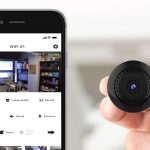AsiaVision/Getty Images
- Mobile banking allows you to experience banking through a mobile app.
- Traditional banking requires you to visit a branch during open hours.
- Mobile banking can be used anywhere, but traditional banking can offer better customer support.
- Read more stories from Personal Finance Insider.
Mobile banking has recently risen in popularity and usage over the last year. Has it become better than traditional banking? We’ll compare the two forms of banking so you can decide if one form of banking suits your need more — or if you prefer a mix of the two.
Mobile banking vs. traditional banking: At a glance
Mobile banking and traditional banking provide access to banking in different ways.
- Mobile banking is a form of banking where you’ll have access to products and services primarily through a mobile app.
- Traditional banking is a form of banking where you’ll visit a local branch to access bank products.
What is mobile banking?
Mobile banking occurs through a mobile app. If you are part of an online banking platform or online-only institution, you’ll primarily access bank products and services through a mobile app or website. Brick-and-mortar banks may have bank apps too, though.
The primary advantage mobile banking has over traditional banking is that you may access your bank account anywhere if you have a smartphone. You don’t visit a branch to view your bank account balance, transfer money, or deposit checks. Mobile banking allows you to do it from the comfort of home.
| Pros | Cons |
|
|
Let’s say you need to deposit your latest paycheck. You don’t need to worry about banking hours or how long a bank line is if you can do it through mobile banking. All you have to do is log in to mobile banking and use the check deposit feature to deposit your check.
What is traditional banking?
Traditional banking is the typical brick-and-mortar bank experience many are likely familiar with. You’ll visit a local branch near your house and either get in line for a bank teller or set up an appointment to handle your banking.
Traditional banking offers a wider range of services than mobile banking. You’ll also be able to establish a stronger banking relationship with a bank if you frequently visit a branch because you’ll have to opportunity to speak with a banker one-on-one.
| Pros | Cons |
|
|
Going back to the previous example, let’s say you have to deposit several checks: a money order, a check from a family member from another country, and your paycheck. Your bank likely won’t let you deposit all of these checks through mobile check deposit, but a local branch won’t have the same restrictions.
With traditional banking, you’ll go to your bank and get in line with the bank teller. In the meantime, you’ll endorse your checks and get out your ID and bank information. You’ll go to the bank teller, tell them what transactions you’d like to make, and they’ll help you through it.
Accessibility limitations in mobile banking
Underrepresented groups often experience significant barriers in receiving bank accounts and services. While mobile banking is becoming more frequently used and doesn’t have physical limitations, it still may not be easily accessible for everyone.
According to a 2019 FDIC study, only 29.8% of households that have a working-age person with a disability accessed their bank account primarily through mobile banking. In comparison, 42.9% of households that do not have a working-age person with a disability used mobile banking as their primary method of accessing their bank account.
“Sometimes within the disability community, technology adoption is often strongly influenced by socioeconomic status,” says National Disability Institute Executive Director Thomas Foley. “In 2022, the federal SSI (Supplemental Security Income) is $841 a month. If you think about how much a new smartphone costs, you can see there is an economic barrier to entry that is particularly pronounced in the disability community.”
Foley adds that, because of these economic considerations, many people with disabilities may be late adopters to technological changes, and those living in rural areas experience even greater barriers to broadband and mobile access.
“Many banks have spent a lot of time and effort and made a strong commitment to digital accessibility. Their apps are really solid. But at the same time, occasional accessibility issues do still arise,” Foley says.
Foley points out that, for someone without home broadband access, it may be more difficult to overcome a mobile banking accessibility issue.
Pablo DeFilippi, executive vice president of the Inclusiv Network, says mobile banking also may be less accessible for immigrants who do not have a US ID and unbanked households.
If you apply for a bank account online, you can’t use a foreign ID or Matricula consular. Some online banking platforms will also require you to link your current bank account when you’re opening it.
“The fact that you need to open an account means that you have to find a financial institution that is willing to open the account in the first place,” says DeFilippi.
Mobile banking vs. traditional banking: Which is better?
Most national banks and credit unions provide traditional and mobile banking services, so you may not necessarily need to choose between mobile banking and traditional banking.
However, you will need to weigh options if you would like to bank with a small local financial institution that doesn’t have a mobile app or an online banking platform that doesn’t have physical locations.
Patrina Dixon, CFEI, owner of P. Dixon Consulting, LLC, says mobile banking could be a good option for opening a savings account or storing an emergency fund.
“I always tell people to pay yourself first. Do that by having money automatically deposited into an online account. I say deposit it and forget about it,” says Dixon.
If you require bilingual services, Dixon recommends using a traditional bank. Some online banking platforms only offer customer service through live chat or email.
Powered by WPeMatico






